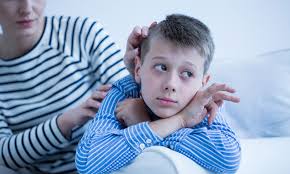General Health Tips & News
Children with Autism
By A.S. (staff writer) , published on May 16, 2022

Medicine Telehealth Health Autism
Children with autism face challenges with their social behavior and communication skills. While there is no single apparent cause of autism in children, early diagnosis can help you provide the support your child needs in order to ensure a better quality of life.
What is Autism?
Autism, also termed autism spectrum disorder (ASD), is a broad term for developmental and neurological disorders that affect how a person perceives, communicates, and interacts with others. The Diagnostic and Statistical Manual of Mental Disorders (DSM-5) describes autism as:
-
Repetitive patterns of behaviors and restricted interests
-
Continuous challenges of social communication and interaction
-
The inability of a child to function properly in a school and workplace.
The symptoms of autism become clearly noticeable in early childhood, particularly in the first two years of life, and last throughout an individual’s life. The symptoms of autism and the ability of a child to function can be improved with treatment and evaluation.
According to the Centers for Disease Control, autism affects an estimated 1 in 44 children in the United States today.
Types of Autism
Asperger's syndrome is a type of autism. This is a form of autism that is on the milder end of the spectrum. A person with Asperger's syndrome may be quite brilliant and capable of managing their daily activities. They could be completely absorbed in issues that interest them and talk about them incessantly. However, they have a considerably more difficult time socially.
Passive Developmental Disorder-Not Otherwise Specified (PDD-NOS)
Pervasive Developmental Disorder – Not Otherwise Specified (PDD-NOS) is a mild type of autism that presents a range of symptoms. The most common symptoms are challenges in social and language development.
Most children with autism who were more severe than Asperger's syndrome but not as severe as autistic disorder were given this diagnosis.
Autistic disorder. This older term is further along the autism spectrum than Asperger’s and PDD-NOS. It includes the same types of symptoms, but at a more intense level.
Childhood disintegrative disorder. This was the rarest and most severe part of the spectrum. It described children who develop normally and then quickly lose many social, language, and mental skills, usually between ages 2 and 4. Often, these children also developed a seizure disorder
Diagnosis of Autism Spectrum Disorders
Before a kid turns one year old, parents/caregivers or pediatricians can discover early indicators of this disease. However, by the time a child is two or three years old, symptoms are usually more persistent. In certain situations, the functional impairment associated with autism may be moderate and not noticeable until the kid enters school, after which their deficiencies may become more obvious when they are with their classmates.
Here are some signs to look for:
-
Speaks later than typical or not at all (nonverbal)
-
Repetition in language or movement, such as repeating the same word or sounds, hand flapping, or any repeated movement
-
Atypical nonverbal communication, including avoiding eye contact, giving few facial expressions, or having a monotone
-
Prefers solitary or parallel play rather than engaging in associative or cooperative play with other children
-
Extremely distressed by changes, including new foods or changes in schedule
-
Preference for predictable, structured play over spontaneous or make-believe play
-
Strong, persistent interest in a specific topic, part of a toy, or item
-
Restricted interests and repetitive behaviors
Risk Factors
According to current research, multiple genetic variables may interact to enhance the chances of autism in a complex way. Certain genetic disorders, such as Fragile X Syndrome and Tuberous Sclerosis, have been linked to an increased risk of developing autism.
Certain drugs, such as valproic acid and thalidomide, have been associated with an increased risk of autism when used during pregnancy. Having an autistic sibling increases the chances of a child being diagnosed with autism. Parents being older at the time of pregnancy is additionally linked with a greater risk of autism.
Treatment Options for Autism:
Several behavioral interventions and therapies can help improve symptoms and challenges in autistic children. It is recommended autism therapies be started right after the diagnosis of autism. Early intervention help your children overcome their challenges and difficulties to learn and adapt new skills.
Autism can be managed by different strategies, including:
-
Language and speech therapy to cope with communication and social deficits and language delays.
-
Medications, such as risperidone and aripiprazole, to handle autism-related issues, such as hyperactivity, depression, repetitive behavior, anxiety, aggression, and irritability.
-
Developmental and education therapy
-
Psychotherapy for helping your child build strengths.
-
Dietary modifications and taking supplements
References
-
American Psychiatric Association. (2013). Diagnostic and Statistical Manual of Mental Disorders (DSM-5). Washington, DC: American Psychiatric Association Publishing.
-
Dietert, R.R, Dietert, J. C., Dewitt, J. C (2011). Environmental Risk Factors for Autism, Emerg. Heath Threats J., 2011, 4:10:3402/ehtj.v4i0.7111
-
CDC. (2021, April 29). Autism Spectrum Disorder (ASD) Retrieved August 19, 2021, from: https://www.cdc.gov/ncbddd/autism/index.html
Find articles related to: Medicine Telehealth Health Autism
More articles about General Health Tips & News
Back to the Health Tips Index




